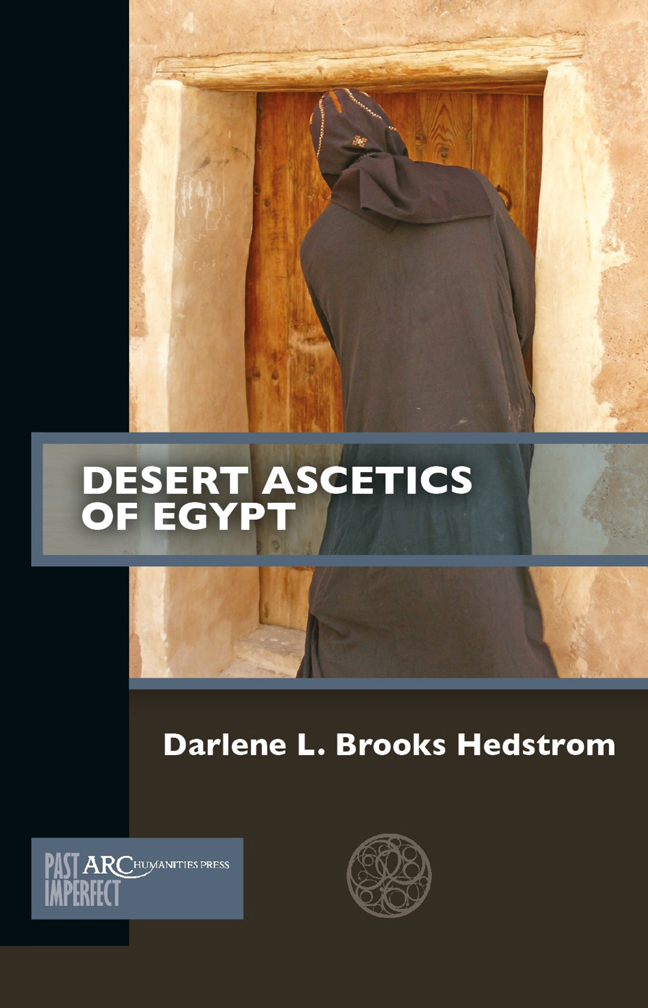Book contents
- Frontmatter
- Contents
- List of Illustrations
- Introduction: Travelling into the Desert
- Chapter 1 Desert Ascetics as Early Christian Celebrities
- Chapter 2 What Did the Desert Ascetics Teach and How Did They Live?
- Chapter 3 Who Was the First Desert Ascetic?
- Chapter 4 Monastic Literature, Letters, and Desert Ascetics
- Chapter 5 Archaeology of Early Egyptian Monasticism
- Chapter 6 Archaeology of Monastic Places
- Chapter 7 Monastic Archaeology and Monastic Things
- Conclusion: Reassembling a History of the Desert Ascetics of Egypt
- Further Reading
Conclusion: Reassembling a History of the Desert Ascetics of Egypt
Published online by Cambridge University Press: 20 February 2024
- Frontmatter
- Contents
- List of Illustrations
- Introduction: Travelling into the Desert
- Chapter 1 Desert Ascetics as Early Christian Celebrities
- Chapter 2 What Did the Desert Ascetics Teach and How Did They Live?
- Chapter 3 Who Was the First Desert Ascetic?
- Chapter 4 Monastic Literature, Letters, and Desert Ascetics
- Chapter 5 Archaeology of Early Egyptian Monasticism
- Chapter 6 Archaeology of Monastic Places
- Chapter 7 Monastic Archaeology and Monastic Things
- Conclusion: Reassembling a History of the Desert Ascetics of Egypt
- Further Reading
Summary
Egyptian Monasticism emerged in a diverse religious landscape that included traditional Egyptian religion, Roman religion, Judaism, and Christianity. Egypt was shaped both by this religious pluralism and the complex theological arguments that took place regarding the nature of Jesus, the interpretation of Scripture, and the correct structure of Christian education, or paideia. In some ways, the Sayings sidestep many of the contentious issues and present monks apart from the religious pluralism that existed in Alexandria and the other regions of Egypt. Desert Ascetics, the Sayings tell us, were focused on their individual pursuit of God and consumed by existential questions of what it meant to be a Christian living apart from one’s biological family and community. But as we have seen both from the literary tradition and the archaeological evidence, monks were more engaged with their former communities than is indicated in the hagiographic Greek and Latin accounts.
This short introduction to the Desert Ascetics of Egypt is intended to illustrate new ways of thinking about desert monasticism and its history. The study of monasticism has changed dramatically in the last twenty-five years. Exciting discoveries in monastic archaeology and the continual publication of Coptic sources allow us to refine and expand the story of the monastic movement to reveal the Egyptian voices for Desert Asceticism, which is missing from the Greek and Latin sources. As expressed in the Sayings, the normative picture of the Desert Ascetics reflects a particular portrait of monasticism as fifth and sixth-century monastic editors crafted it. Archaeology, however, offers additional evidence of the past—in epigraphic, papyrological, architectural, artefactual, and environmental forms—to create a richer context for the lived experiences of Desert Ascetics. By integrating our new sources with more well-known ones, we can better appreciate the rich history of the monastic movement and how communities constructed a history of their origins.
First, the materiality of desert asceticism draws us into the landscape in which monks lived. We can observe the proximity of the desert settlements in relation to the Nile and the well-worn tracks travelled by people and animals. It is a myth that monks lived so far “off the grid” that they could not be found. But this is a myth only in the sense of the physical landscape.
- Type
- Chapter
- Information
- Desert Ascetics of Egypt , pp. 123 - 126Publisher: Amsterdam University PressPrint publication year: 2023



